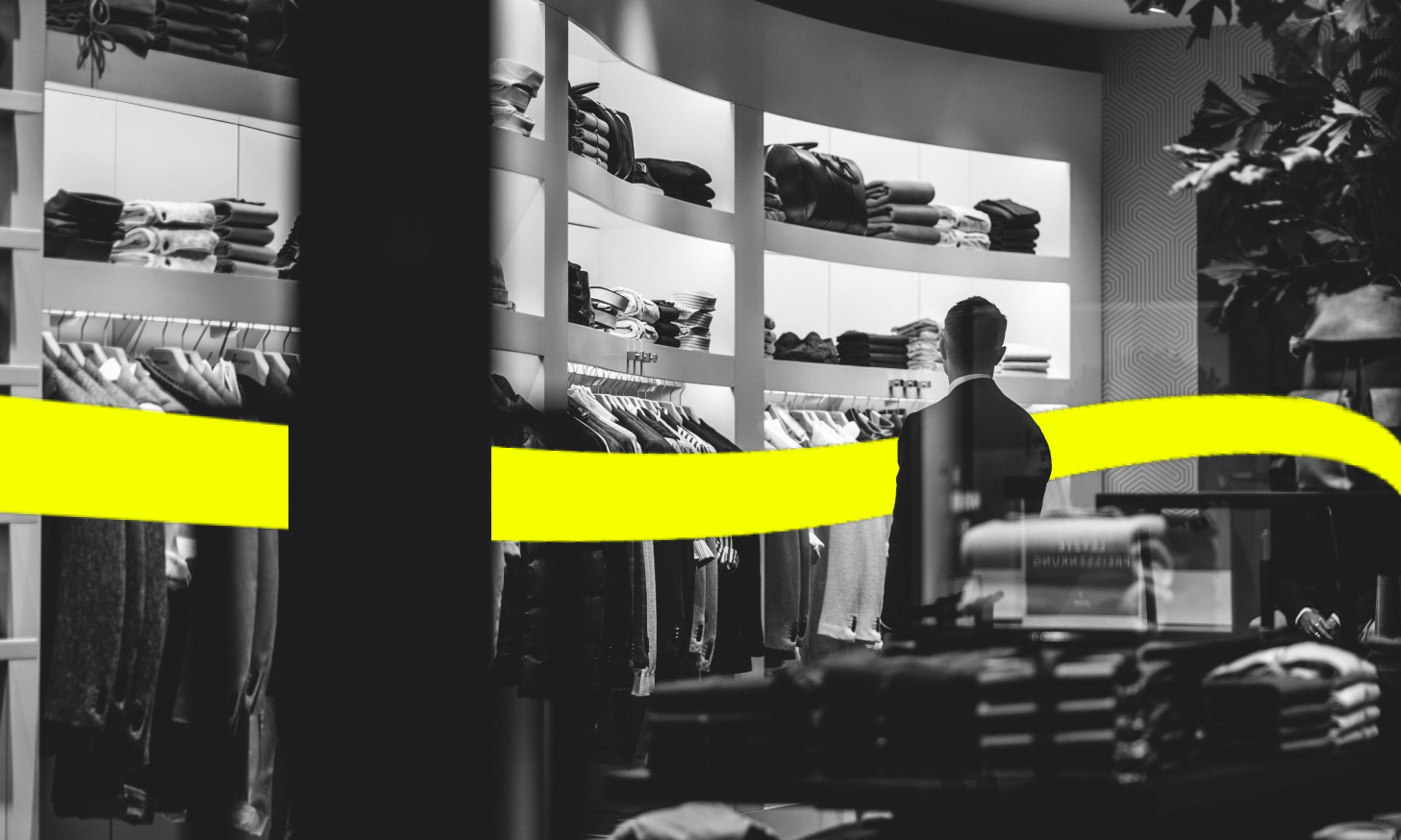T&H CX > Insights > Customer Experience Insights > What makes a custome...
In today's competitive business environment, customer loyalty has become a more critical strategic component for sustained growth than ever before. It’s not just about regular purchasing; it’s about creating lasting relationships and driving customer loyalty where customers consistently choose one brand over others. This transition to a loyalty-focused business model is driven by a blend of positive customer experiences and perceived value. These programs, designed to deliver customer rewards and acknowledge repeat customers, play a critical role in nurturing customer loyalty and growing customer lifetime value for the business. They offer incentives such as discounts, cashback rewards, exclusive offers, or personalised experiences— which help to enhance the brand’s perceived value and encourage customers to continue to spend money with the brand.
Customer loyalty programs have evolved into a powerful tool for businesses seeking to retain customers and boost long-term profitability. A 2022 Statista survey of United States consumers revealed that each person typically belongs to a staggering 16.6 loyalty programs on average. These programs, often rich in incentives such as discounts, exclusive offers, and personalised experiences, are designed to reward customers for their repeated patronage.
The power of these programs lies in their ability to transform occasional buyers into brand advocates, building personal relationships between customers and a brand. By offering tangible rewards for loyalty, businesses not only motivate customers to purchase but also build a deeper emotional connection with their customers. This emotional bond is crucial as it can engage customers and encourage brand advocacy to friends and family, which is a highly effective and cost-efficient way to gain new customers through customer referrals.
For businesses, loyalty programs are an effective tool for customer retention. By incentivising repeat purchases through a rewards program, businesses can maintain a steady revenue stream from loyal customers. These programs also generate valuable data on customer preferences and purchasing behaviors, which can be used to tailor marketing strategies, product development, and personalise customer experiences. Additionally, loyal customers often become brand ambassadors, providing free word-of-mouth advertising, both on social media and in their daily lives, that can attract new customers and enhance the brand's reputation.

Figure 1. Effective loyalty programs are essential in driving brand loyalty and demonstrating value to customers.
Loyalty programs provide a sense of value and recognition. According to a 2022 Statista survey, 70% of Americans considered loyalty programs a leading factor in their loyalty towards their favorite brands, and over 50% said they were likely to increase their participation in a customer loyalty program. Customers enjoy the tangible benefits of rewards, including saving money through discounts, as well as exclusive offers, which enhance the overall value they get from their purchases.
The best loyalty programs enable businesses to differentiate themselves in a crowded market as they understand customers' values. Customer loyalty programs work best by demonstrating this value when repeat customers earn rewards and redeem loyalty points on the things that matter most to them. This could include different ways to save money or redeem points, such as; credit towards future purchases, discount codes, credit card interest-free periods, or even a free drink.
A successful customer loyalty program can make customers feel appreciated and special, deepening their emotional connection with the brand. Additionally, they can enhance the customer experience by offering personalised interactions and services, making the shopping experience more convenient and enjoyable, and leading to a greater level of customer satisfaction. Customers often appreciate being part of an exclusive club, where they can enjoy perks that aren't available to non-members.
Various customer loyalty program models cater to different business needs and customer preferences. Here is an overview of the most commonly seen types:
These are the most common and straightforward loyalty programs. Customers earn points for each purchase, which they can later redeem for rewards. The simplicity of the points system makes it easy for customers to understand and engage with. The more a customer purchases, the more points they accumulate, motivating repeat purchases. Starbucks is an example of a brand that uses a point-based loyalty program where customers can redeem points.
Tiered programs add a level of sophistication to the basic points system by categorizing customers into different levels or tiers based on their purchasing behavior. Each tier offers progressively better rewards, privileges, or services. For instance, higher tiers may offer exclusive access to new products, special events, or premium customer service. Sephora is an example of a brand that uses a tiered loyalty program.
These programs align with the values or social conscience of the customer base. Instead of offering direct rewards to customers, businesses make contributions to causes or charities based on customer purchases. This approach helps in building a strong emotional connection with the brand, as customers feel that their purchases are contributing to the greater good. Patagonia is an example of a brand that uses a value-based loyalty program that emphasises environmental responsibility.
In subscription programs (or paid programs), customers pay a recurring fee to access certain benefits. Similar to Amazon’s Prime, which is a great example of this type of loyalty program, the benefits offered can include free shipping, exclusive or early access to products or services, and special pricing, all of which help to build customer loyalty.
Each of these loyalty program types caters to different business strategies and customer engagement goals. While points based and tiered programs are more transactional and aimed at encouraging the next purchase, where the higher their tier the greater the reward, value based and subscription based programs focus more on building long-term relationships and brand loyalty. The choice of program depends on a business's specific objectives, the nature of its products or services, its understanding of its customers’ motivations and preferences, and how it rewards customers.

Figure 2. A points program is an effective way to demonstrate value for customers.
When a business truly understands its target audience, it can tailor its products, services, and customer interactions to meet their specific needs and expectations. This alignment enables a more personalised experience for the customer, making them feel valued and understood. Such personalisation is key to building emotional connections that transform casual buyers into a loyal customer base.
Additionally, understanding the customer helps in designing a more effective loyalty rewards program and driving customer retention. When a business knows what motivates its customers, it can create rewards and incentives that resonate with them and encourage repeat business. For instance, if the target audience values exclusivity, a tiered loyalty program offering exclusive perks might be more appealing than simple points-based rewards programs.
Understanding the customer enables businesses to more effectively communicate as they can tailor their messaging, choose the right channels for communication, and create marketing campaigns that speak directly to their customer's needs. Effective communication is crucial in building trust and loyalty.
Data analytics and customer feedback mechanisms are invaluable tools for gaining insights into the target audience and better understanding customers. Marketing teams can use insights from regularly analysing purchase patterns, conducting surveys, and monitoring social media interactions, to understand how frequently customers shop at an online store, or engage with points programs can provide ongoing insights into your customers' evolving preferences and expectations.
Understanding the target audience is a fundamental aspect of fostering customer loyalty. This understanding involves delving deep into who the customers are, their needs, preferences, behaviors, and motivations. It's about grasping not just the demographic data such as age, gender, or income, but also psychographic elements like lifestyle, values, and interests.
Personalisation and customisation are critical elements in fostering customer loyalty, as they directly cater to the unique preferences and needs of individual customers. In a marketplace where consumers are inundated with choices, offering a personalised experience can significantly differentiate a brand and deepen its connection with customers. A 2021 McKinsey report revealed that 71% of consumers expect companies to deliver personalised interactions, and 76% get frustrated when it doesn’t occur.
Personalisation in customer loyalty involves tailoring experiences, offers, and communications to the individual customer based on their past behaviors, preferences, and interactions with the brand. This can range from addressing customers by their names in emails to suggesting products based on their browsing history or purchase patterns. Such personalised interactions make customers feel recognised and valued, leading to increased satisfaction and loyalty.
Customisation takes this a step further by allowing customers to alter products or services to their specific requirements, which has the added benefit of empowering customers by allowing them to control their own narrative. This could be in the form of customisable products, where customers choose certain features or components, or customisable experiences. Customisation gives customers a sense of ownership and involvement with the brand, enhancing their overall experience and attachment to the product.
Gamification and engagement can also be pivotal elements in the success of loyalty programs, significantly enhancing their appeal and effectiveness. Gamification involves incorporating game-like elements such as points, levels, challenges, and rewards into the loyalty program. This approach taps into the psychological aspects of gaming—such as competition, achievement, and reward—to create an engaging and interactive experience for customers.
The role of gamification in loyalty programs is to motivate continued participation and interaction. By turning the process of earning rewards into a game, customers are more likely to stay engaged and enjoy the experience. Elements such as earning badges for completing certain actions, leveling up for repeated purchases, or unlocking special rewards through challenges make the loyalty experience more dynamic and enjoyable. This not only increases the frequency of interactions with the brand but also deepens the emotional connection customers have with it.
In loyalty programs, customer engagement and the ongoing interaction and involvement of customers with the brand is crucial for maintaining customer interest and participation over time. Engaging loyalty programs are those that keep customers interested through regular updates, personalised communications, and new, appealing offers. They also provide platforms for customers to interact with the brand and with each other, such as through social media channels or community programs, and are a great tool for building customer communities through referral programs.
The combination of gamification and engagement strategies ensures that loyalty programs are not seen as mere transactional tools but as part of a broader, enjoyable customer experience. Gamified elements keep the program fun, light-hearted, and interesting, while engagement strategies ensure that the program remains relevant and top-of-mind for customers.
Additionally, gamification and engagement can lead to increased brand advocacy. Engaged and entertained customers are more likely to share their experiences, recommend the brand to others, and promote it on social media, further extending the reach and impact of the loyalty program.
Given their importance, businesses need to rely upon best practices to facilitate a successful loyalty program. Such practices include clear communication and promotion, seamless integration with existing systems, and ongoing evaluation and improvement.
Transparency and clarity are also paramount in loyalty programs. Customers should easily understand how to join, earn points or rewards, and redeem them. Clear communication involves straightforward, jargon-free language and accessible information about the program's benefits and terms. Promoting the program effectively is also essential. This includes leveraging various channels such as email, social media, in-store signage, and the business’ website to ensure visibility. Regular updates about the program, including new rewards or changes, should be communicated proactively to keep customers informed and engaged.
For a loyalty program to be effective, it should integrate seamlessly with the business's existing marketing and technology (Martech) stack. This integration allows for a smooth customer experience, with loyalty rewards and interactions forming a natural part of the overall customer journey. Integration with point-of-sale systems, e-commerce platforms, and customer relationship management (CRM) tools is crucial for tracking customer purchases and interactions. It also facilitates personalized marketing efforts and ensures that customer data is up-to-date and accurate.
A loyalty program should not be static; it requires regular assessment and refinement. This involves monitoring key performance metrics to gauge the program's effectiveness in driving customer engagement and sales. Businesses should collect and analyze customer feedback to understand their experience and expectations from the program. This data can be used to make improvements, whether it's tweaking the rewards structure, enhancing the user experience, or adding new features. Staying attuned to market trends and competitor activities is also vital to ensure the program remains relevant and competitive.
Measuring success and adjusting strategy in loyalty programs is a dynamic and often challenging process that requires businesses to continually evaluate program performance and adapt to changing customer needs and market conditions. Success in loyalty programs is typically gauged through a variety of metrics, including:
● Program enrolment numbers
● Customer engagement rates
● Frequency of repeat purchases and dollar spent
● Average transaction values
● Redemption rates of rewards
● Customer lifetime value (CLV)
These metrics provide insights into how effectively the program is attracting and retaining customers, as well as its impact on sales and revenue, and building customer loyalty. In addition to these quantitative measures, qualitative feedback from customers, such as satisfaction surveys and reviews, is equally important. This feedback offers businesses a deeper understanding of the customer experience and perceptions of the loyalty program, highlighting areas for improvement and nurturing loyal customers.
Businesses also analyse the cost-effectiveness of their loyalty programs, evaluating the return on investment to ensure that the benefits outweigh the costs. This involves assessing both direct costs, such as rewards and operational expenses, and indirect costs, such as the impact on brand perception and customer relationships.
Data analytics also plays a crucial role in this process, enabling businesses to segment their customer base and tailor the program to different customer groups. Advanced analytics can also predict customer behaviour, helping businesses to proactively adapt their strategies to meet evolving needs.
Several real-world examples of successful loyalty programs demonstrate the impact of well-executed customer loyalty strategies. Such examples include the following brands:
Starbucks Rewards: Starbucks' loyalty program is renowned for its effectiveness in enhancing customer experience and driving sales. Members earn stars for each purchase, which can be redeemed for free drinks, food, and merchandise. The program is integrated with a mobile app, allowing for mobile orders and payments, and it offers personalized offers and free birthday rewards.
Amazon Prime: Amazon Prime is a particularly good example of a subscription-based loyalty program. For an annual fee, members receive benefits such as free two-day shipping, access to streaming services, and exclusive shopping deals. This program enhances customer loyalty by embedding Amazon's services into the daily lives of its users.
Sephora Beauty Insider: Sephora's tiered loyalty program offers members points for every purchase, which can then be exchanged for product samples and experiences. The program features three tiers (Insider, VIB, Rouge), with higher tiers offering more exclusive benefits such as free makeovers and invites to special events.
Delta SkyMiles: Delta Airlines' SkyMiles program is one of the most popular and well-known airline loyalty programs. Members earn miles for flights, which can be redeemed for free flights, seat upgrades, and more. The program includes tiered levels with additional benefits at each level, such as priority boarding and lounge access.
These programs illustrate the diverse ways in which loyalty strategies can be implemented across different industries. They share common features of offering real value to customers, personalised experiences, and leveraging data to continuously improve and tailor their offerings.
Loyalty programs come with their own set of challenges, and addressing these challenges is crucial for the success and sustainability of the program. One of the primary challenges is aligning the loyalty program with customer expectations and providing customers the value they are seeking. Customers often have high expectations regarding the value and rewards of a loyalty program. To manage these expectations, it's essential to set clear, achievable goals for customers and communicate them effectively. This involves being transparent about how points or rewards are earned and redeemed. Additionally, offering a variety of rewards that cater to different customer segments can enhance satisfaction. Regular surveys and feedback mechanisms can also help in understanding customer expectations and making necessary adjustments to the program.
With loyalty programs often requiring the collection and analysis of customer data, ensuring data security and privacy is critical. Breaches can lead to loss of customer trust and legal repercussions. To mitigate this risk, businesses must invest in robust data security infrastructure and comply with data protection regulations such as the GDPR. It's also important to be transparent with customers about what data is being collected, how it's being used, and how it's protected. Like with any relationship, transparency helps to build trust between the brand and the customer, which in turn assists in nurturing loyal customers.
Customer loyalty programs are no longer optional add-ons but essential elements of a modern business strategy. Their impact extends far beyond simple transactional benefits, building and reinforcing deep emotional connections with customers and driving brand advocacy. For businesses looking to thrive in today’s market, understanding and leveraging these programs is vital. By embracing customer-centricity, integrating cutting-edge technology, and taking an agile approach when responding to market trends, businesses can utilse different types of loyalty programs as powerful engines of growth, resilience, and sustainability that reward existing customers and attract new customers as loyalty program members.
Founding Director of Tortoise & Hare, Angela, is passionate about helping customer-first brands translate across any channel. A senior specialist across our strategic and brand services, she leverages her expertise to help brands like yours connect with the customers to create valuable relationships for the long term.
Founding Director of Tortoise & Hare, Angela, is passionate about helping customer-first brands translate across any channel. A senior specialist across our strategic and brand services, she le...

Keep up to speed with insights from the frontier of customer marketing in Australia.

Explore how UX design extends far beyond aesthetics to encapsulate an entire human-centered design philosophy which optimises the user experience.

When done right, customer loyalty programs play a critical role in nurturing customer loyalty and growing customer lifetime value for the business.

Discover the role of Customer Experience (CX) in 2025, its strategic importance, technological integration, and the emerging trends shaping business success.
If you’re looking to build engagement at every touchpoint of your customer’s journey, we’d like to help.